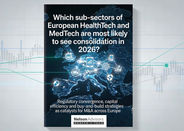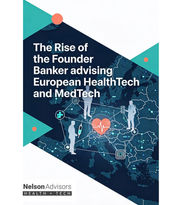The Benefits of Virtual Reality in Healthcare
- Julie Pelta
- Nov 2, 2017
- 3 min read

Technology plays a big part in all of our day to day lives, whether it is at home or at work. Innovative developments such as virtual reality can often make our lives easier, improve processes and health and safety.
Walter Greenleaf, PhD Expert on The Medical Applications of Virtual Reality Technology has said “Although entertainment, social connection and gaming will drive the initial adoption of Virtual Reality technology, the deepest and most significant market for VR will be in clinical care and in improving health and wellness”.
According to Bloomberg, some of the world’s biggest tech companies have invested over $4 Billion in virtual reality since 2010 and the healthcare industry plays a big part in these investments.
Virtual reality headsets make you feel like you’re actually in the room, the doctor’s office or anywhere you want to be, making it a great tool in facilitating patient care. VR is also an amazing tool that can aid in education and training in the healthcare industry, providing more realistic experiences.
Proximie is a great example that uses augmented reality technology to bring cutting edge, collaborative, visualisation tools to the operating room. Proximie enables clinicians to virtually scrub into clinical setting, in real time, increasing access to high quality surgical care, improving patient outcomes, reducing costs and delivering a highly engaging training experience.

VR has the power to transform the healthcare industry. Here’s how:
1) Real time hands-on experience in medical education
In 2016, Dr Shafi Ahmed performed an operation to remove cancerous tissue from a patient’s bowel, live streamed in VR with the hope that it will make the healthcare industry fairer and boost training. Additionally, allowing medical students, trainee surgeons and curious members of the public to involve themselves in the procedure in real time via the Medical Realities website.
This enables medical students to acquire knowledge and understanding about the human body. Students can perform ‘hands on’ procedures but in a safe and controlled setting where they are able to make mistakes and learn from them without any risk to a patient, then applying the skills learnt to a real life case.
2) Improved patient education
From learning about diagnoses and medications to understanding tests and procedures, VR enables patients to learn about what is involved in the clinical trial and conveys it as an interactive experience which decreases distraction and offers visualisations that can promote better understanding about their conditions.
3) Helps patients manage stress
VR technology helps patients manage stress by giving them easy to understand information and help them feel more in control and comfortable. OnComfort is a start-up that is using virtual reality to aid patients diagnosed with cancer.
They have created five VR apps to reduce patients stress, anxiety and need for pain medication. These have been tested by doctors on more than 1,500 patients in the U.S. and Europe and have produced positive results. Breast cancer patients who used OnComfort’s VR apps saw 50% reduction in anxiety, 80% reduction in the use of pain medication and a 40% decrease in overall pain.
4) More detailed medical imaging
Through EchoPixel’s True 3D system, VR has the ability to provide 3D forms of CT scan and MRI images to physicians which enhances the understanding of patient structures and diseases. This in turn enables doctor’s to produce better outcomes for patients, in less time.
5) Faster rehabilitation
Stroke and Brain injury victims can use immersive virtual reality therapy created by MindMazeto to regain motor and cognitive function faster than physical therapy. The virtual exercises and real time feedback are made to feel like games, helping to motivate patients to practice activities every day, as well as assisting physiotherapists in making decisions whether the person is ready to carry out tasks.
VR and AR is an exciting space in Health Tech.
It’s early days and funding is still a challenge for these innovations. The technology is developing so rapidly, AR and VR offers a significant opportunity to disrupt the status quo. The technology is becoming more economically feasible and there is little doubt that is does assist healthcare providers to deliver and patients to receive the best possible care.


















































Comments